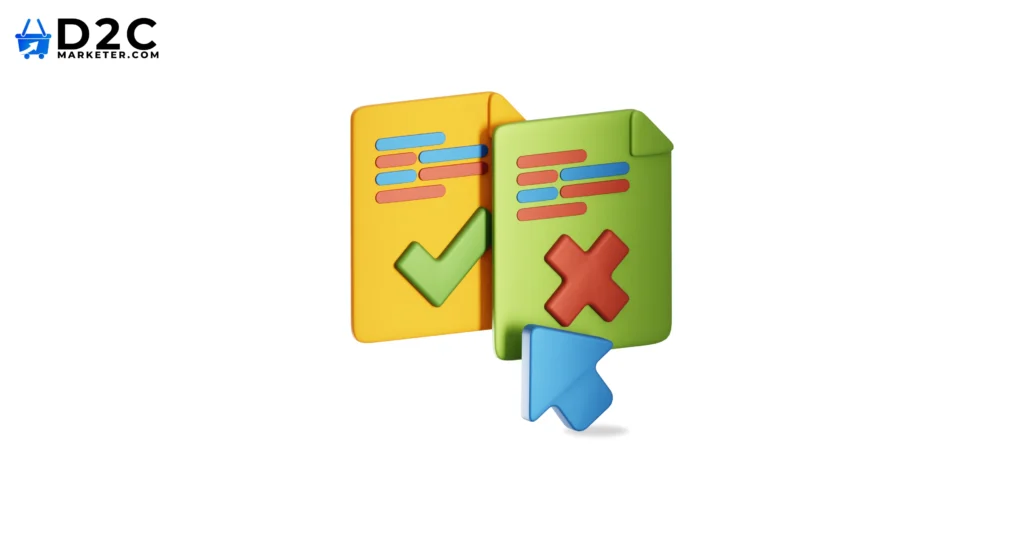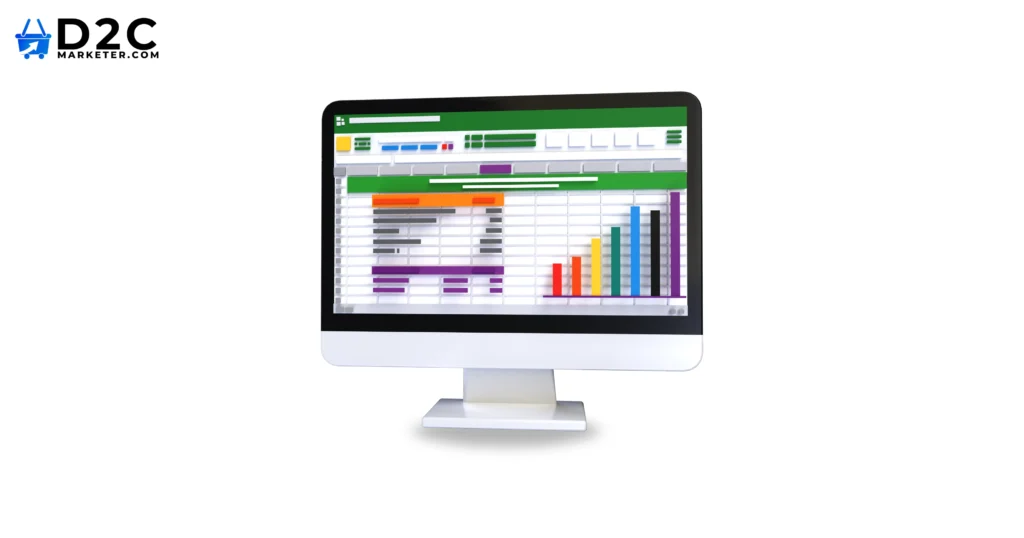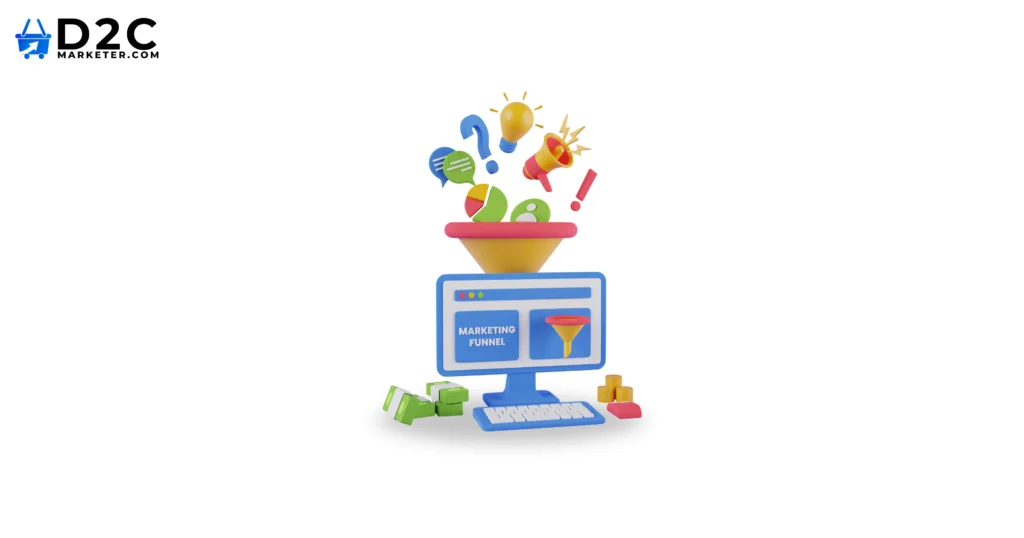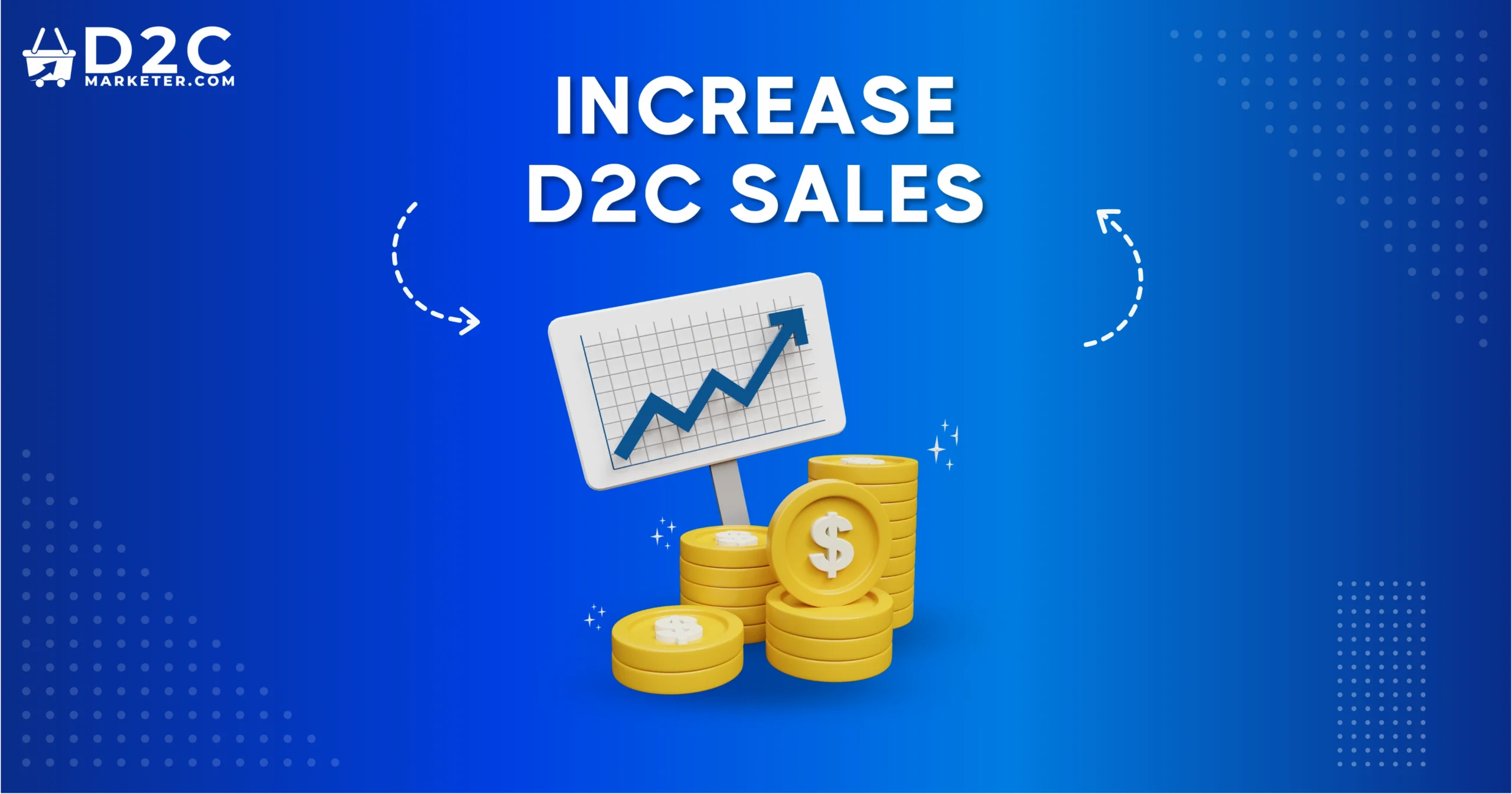Using Data to Drive Increase D2C Sales and Conversions
In today’s fast-paced digital world, data is no longer just a buzzword, it’s the secret weapon for increased D2C sales and boosting conversions. As a D2C brand, you have a unique advantage: direct access to your customers. But how do you turn that access into actionable insights that actually drive growth? The answer lies in data. By understanding how your customers behave, what they care about, and how they interact with your brand, you can fine-tune your D2C marketing strategies and make smarter decisions across the board.
In this article, we’ll show you how to use data to increase D2c Sales, stay ahead of SEO trends, and choose the right marketing channels to maximize results. If you’re ready to see your brand soar, let’s dive into how data can make all the difference.
Let’s dive in!
Table of Contents
- The Importance of Data-Driven Decision-Making
- Key Data Points D2C Brands Should Track
- Tools for Data Collection and Analysis
- Optimizing Your Sales Funnel Using Data
- Data-Driven Strategies to Improve Each Funnel Stage
- Personalization and Data-Driven Marketing
- Pros & Cons: Using Data for D2C Sales
- Conclusion
- FAQs
The Importance of Data-Driven Decision-Making

Customer lifetime value (CLV)
In the world of direct-to-consumer (D2C) marketing, relying on data isn’t just a best practice, it’s the foundation for smarter decisions and better business outcomes. When you have the right data at your fingertips, you’re no longer guessing or making decisions based on hunches. Instead, you’re empowered to optimize every aspect of your D2C brand strategy with precision. The result? Increased sales, improved customer experiences, and better ROI on your marketing efforts.
Why Data Matters
Data helps you understand what’s really happening on your website and with your customers. Without it, you risk making decisions that could miss the mark. For example, if you’re seeing a high volume of traffic but low conversion rates, you might instinctively focus on driving even more traffic. But with the right data, you can uncover the real issue, perhaps your checkout process is too complicated or your product descriptions aren’t persuasive enough. Data reveals these pain points, allowing you to fix them before they impact your bottom line.
Moreover, tracking key D2C metrics provides insights into what’s working and what’s not, in your marketing channels. As you fine-tune your D2C marketing strategies, you can adapt to changing customer behavior and SEO trends, ensuring your efforts are always aligned with what your audience wants.
Key Data Points D2C Brands Should Track
To effectively use data for your D2C business growth, there are a few essential metrics you should keep a close eye on:
1. Website Traffic
Understanding your website traffic is fundamental. You need to know where your visitors are coming from and how they’re interacting with your content. Key metrics like bounce rate, engagement rate, and time on site will give you a clear picture of how well your website is keeping visitors engaged. If your bounce rate is high or people aren’t spending much time on your site, it’s a sign that something needs attention, maybe your content isn’t compelling enough or your site’s navigation is confusing.
2. Customer Journey & Behavior
Tracking how visitors navigate your website helps you understand where they’re dropping off and what’s keeping them engaged. Tools like heatmaps and session recordings allow you to see exactly where people click, hover, or abandon their journey. This insight is gold for optimizing your D2C brand strategy and improving the user experience.
3. Conversion Rate
A strong conversion rate is a key indicator of success. It tells you how well your site is turning visitors into paying customers. If your conversion rate is low, it might indicate issues with product presentation, pricing, or the checkout process. Data helps you identify specific areas to improve, whether it’s tweaking your product pages or offering better calls-to-action.
4. Cart Abandonment Rate
If customers are adding items to their cart but not completing the purchase, this is a clear signal that something’s off. Tracking your cart abandonment rate can help you pinpoint barriers in the checkout process, like unexpected shipping costs or a complicated form and improve them to increase conversions.
5. Customer Lifetime Value (CLV)
Understanding how much a customer is worth over their entire relationship with your brand is crucial for making long-term business decisions. Customer Lifetime Value (CLV) helps you prioritize retention over just acquisition. By tracking CLV, you can tailor your D2C marketing channels and strategies to nurture loyal customers and increase their lifetime spend.
Tools for Data Collection and Analysis

To effectively use data to increase D2C sales, you need the right tools to collect, analyze, and act on the insights provided. Several powerful platforms can help you gather key data and use it to enhance your marketing efforts. In this section, we’ll explore some of the most popular and effective tools to help you turn raw data into actionable insights.
1. Google Analytics
Google Analytics is a must-have for any D2C brand looking to dive into data analysis. This powerful, free tool offers in-depth insights into website performance, customer behavior, and much more. It can help you track key increase D2C metrics such as bounce rate, session duration, pages per visit, and conversion rates. You can also set up goals to track specific actions, like when a user makes a purchase or signs up for your newsletter.
How to Use It:
Google Analytics can help you understand how visitors interact with your site, which pages are most popular, and where users are dropping off. With this data, you can improve your site’s user experience (UX), optimize your D2C SEO strategy, and even spot new opportunities for content or product offerings.
2. Microsoft Clarity
Microsoft Clarity is another fantastic, free tool for gaining deep insights into how visitors engage with your site. Unlike Google Analytics, Clarity focuses on visual and behavioral data, such as heatmaps and session recordings. It shows you exactly where users click, scroll, and spend time on your website, providing a clearer picture of how they’re interacting with your content.
How to Use It:
Clarity is ideal for understanding the customer journey. By reviewing heatmaps, you can see if important buttons are being overlooked or if visitors are getting stuck at certain points. Session recordings let you watch a user’s entire journey, so you can identify issues like confusing navigation or abandoned forms that could be hurting your conversion rates. Using this data, you can fine-tune your site and optimize the experience to align with what your customers actually want and need.
3. Shopify Reports
For D2C brands using Shopify, the built-in Shopify Reports feature is a treasure trove of actionable data. It offers a wide range of customizable reports, from sales performance to customer behavior and inventory management. The ability to track customer lifetime value (CLV) and purchase frequency is invaluable when it comes to developing targeted marketing campaigns and retention strategies.
How to Use It:
With Shopify Reports, you can segment your customers based on purchase history, behavior, or even location. This segmentation lets you tailor your marketing efforts more precisely, whether you’re running personalized email campaigns or offering discounts to repeat buyers. You can also track product performance to understand which items are driving the most sales, and use this data to guide your inventory and promotional strategies.
Collecting data is only half the battle, using it effectively is where the real power lies. By combining insights from tools like Google Analytics, Microsoft Clarity and Shopify Reports, you can create a well-rounded understanding of how your customers are interacting with your brand and identify opportunities to improve your site, increase D2C sales, and better align with D2C SEO trends.
The key is to continually monitor your data, test changes, and refine your approach based on what the numbers tell you.
Optimizing Your Sales Funnel Using Data

Your sales funnel is the journey customers take from discovering your brand to making a purchase. Using data to identify bottlenecks in your funnel allows you to fine-tune your process and increase D2C sales.
Identifying Bottlenecks in Your Sales Funnel
The first step in optimizing your sales funnel is identifying where potential customers are getting stuck. Using data insights, you can track exactly where users drop off at each stage of the funnel. This process starts with mapping out your funnel stages, which typically look like this:
- Awareness: Visitors discover your brand.
- Interest: Visitors engage with your content and products.
- Consideration: Visitors add products to their cart.
- Conversion: Visitors complete the purchase.
Each of these stages provides an opportunity to capture data that can inform improvements. For example, if you’re seeing lots of traffic to your product pages but low add-to-cart rates, your D2C marketing strategy might need a closer look at your product descriptions, images, or calls to action. Conversely, if customers are abandoning their carts but you’re getting high checkout completions, perhaps something in the checkout process, like shipping costs or payment options, needs reworking.
Data-Driven Strategies to Improve Each Funnel Stage
1. Awareness Stage:
At the top of the funnel, you’re focused on attracting visitors. If traffic is low, data can reveal which D2C marketing channels are performing best. For instance, Google Analytics can show which traffic sources (social media, SEO, ads) are driving the most visitors. You can then double down on the channels that are working. Tracking SEO trends for D2C brands and optimizing your content for search engines can also help attract more organic visitors and increase brand visibility.
Strategy: Use SEO tools to refine your content strategy, optimize for high-ranking keywords, and improve your site’s search visibility. Aligning your D2C brand strategy with relevant SEO trends will attract the right audience to your site.
2. Interest Stage:
Once visitors land on your site, it’s crucial to keep them engaged. Data here could point to high bounce rates or short site visits, which can indicate that your pages aren’t engaging enough. By using tools like heatmaps and session recordings, you can see where users are getting distracted or disengaging.
Strategy: Improve page design, streamline your navigation, or test different CTAs. You might also experiment with personalized content such as recommendations based on browsing behavior, to increase engagement.
3. Consideration Stage:
Now that customers are considering making a purchase, you want them to take the next step: adding products to their cart. A common bottleneck here could be confusion or lack of trust in your product descriptions or pricing. If visitors are leaving before adding to cart, it’s time to dig deeper into your product pages.
Strategy: Optimize your product pages by testing various formats for product descriptions and images. Adding social proof, such as customer reviews, and improving trust signals can help move customers through this stage.
4. Conversion Stage:
This is where the magic happens, but many brands struggle with cart abandonment. Using data, you can pinpoint exactly where customers are dropping off during checkout. You might discover that unexpected shipping costs or a lengthy checkout process are causing frustration.
Strategy: Reduce friction in the checkout process by simplifying forms, offering guest checkout, and clearly displaying shipping costs early. You can also use exit-intent popups to offer discounts or reminders to users abandoning their carts.
Personalization and Data-Driven Marketing

In today’s competitive D2C landscape, one-size-fits-all marketing simply doesn’t cut it anymore. Consumers are looking for more than just generic ads and broad messaging, they want experiences that feel tailored to their individual needs. That’s where data-driven personalization comes in. When you use data to personalize your marketing campaigns, you’re not just boosting your conversion rates, you’re creating meaningful connections that drive brand loyalty and increase D2C sales.
How Data Makes Personalization Possible
- Targeted Recommendations: One of the most effective ways to personalize your approach is through product recommendations. By analyzing past purchases or browsing habits, you can suggest products that are likely to appeal to each customer. This not only makes the shopping experience feel more relevant, but it also increases the likelihood of a sale.
- Tailored Emails: Email marketing is another goldmine for personalization. When you segment your audience based on their behaviors, like whether they’ve abandoned their cart or made multiple purchases, you can send emails that feel highly personal. For example, if someone left items in their cart, a well-timed email with a special offer or reminder can prompt them to complete the purchase. Personalizing your emails can be as simple as using their name or sending a message about products they’ve recently shown interest in.
- Dynamic Website Content: Personalization doesn’t stop at emails. You can also adjust your website content based on user data. For instance, if a customer has been browsing a specific category of products, your site can highlight similar items when they return. This keeps them engaged, makes their experience more relevant, and increases the chance of converting a visit into a purchase.
Real-World Examples of Data-Driven Personalization
A beauty brand known for its direct-to-consumer model, uses customer behavior data to create targeted marketing campaigns across its channels. Through personalized content on their website and tailored social media ads, the brand has been able to drive conversions by speaking directly to customers’ specific skincare needs and preferences. Their use of user-generated content also helps to build community and trust, further enhancing the personalized experience.
Pros & Cons: Using Data for D2C Sales
| Pros | Cons |
| Better understanding of customer behavior | Requires time and investment in tools |
| Optimized marketing strategies | Can be complex without proper data analysis |
| Improved customer experience & personalization | Risk of over-relying on data without creativity |
| Enhanced decision-making with actionable insights | Data privacy concerns need management |
Conclusion
In today’s competitive landscape, data is your secret weapon to increase D2C sales and drive better conversions. By tapping into the right D2C metrics and customer insights, you can optimize every touchpoint of your brand’s journey, whether it’s improving website performance, refining your sales funnel, or crafting personalized marketing strategies that truly resonate with your audience. The best part? Data helps you stay ahead of shifting SEO trends for D2C brands, ensuring your strategies evolve as your business grows.
If you’re ready to harness the power of data and take your D2C brand to new heights, D2C Marketer is here to help. As a trusted D2C marketing agency, we specialize in implementing data-driven strategies that deliver tangible results. Let’s transform your insights into growth.
Ready to boost your D2C sales with smart, data-backed strategies? Reach out to D2C Marketer today and start your journey to success!
FAQs
Key customer data like demographics, purchase history, browsing behavior, and email engagement are crucial. This data helps understand customer preferences and tailor marketing efforts.
By analyzing customer data, D2C brands can identify bottlenecks in the sales funnel. This allows for targeted marketing campaigns, personalized product recommendations, and optimized checkout processes, leading to increased conversions.
Tools like Google Analytics, social media analytics, and customer relationship management (CRM) software can be used to collect and analyze customer data.
Absolutely! Data-driven personalization allows brands to create tailored marketing messages and product recommendations based on individual customer preferences and behavior.
Data-driven personalization significantly boosts conversions by delivering relevant and timely offers to customers. It enhances customer experience, builds loyalty, and ultimately drives sales.

